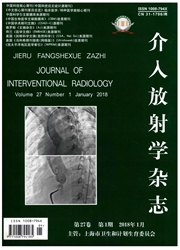

 中文摘要:
中文摘要:
目的探索血流动力学因素在DeBakeyⅢ型主动脉夹层发生、发展以及临床预后评估中的作用。方法通过CT扫描获取临床常见典型形态的DeBakeyⅢ型主动脉夹层断层图像序列,重建出三维主动脉夹层血流动力学分析计算机模拟模型,采用计算流体力学数值模拟方法对主动脉夹层真假腔内的血液流场进行数值模拟分析。结果①单破口型夹层假腔压强持续高于真腔压强,呈现"吹气球"效应;②当DeBakeyⅢ型主动脉夹层真腔受压狭窄时,真腔内压强将低于假腔内压强,夹层真腔内血流流线也会出现部分中断;③夹层撕破口附近的动脉管壁局部血流动力学因素可出现失衡现象。结论 DeBakeyⅢ型主动脉夹层真假腔压强失衡可导致假腔持续扩张、压迫真腔。夹层管壁局部血流动力学改变可能是慢性期B型夹层破裂的危险因素。
 英文摘要:
英文摘要:
Objective To discuss the effect of hemodynamic factors on the development and progresses of DeBakey III aortic dissections,and to assess the value of these factors in predicting prognosis.Methods The computational fluid dynamic simulations with patient-specific DeBakey III aortic dissection geometries were performed through the cardiac cycle.The blood flow pathlines,wall shear stress and static pressure were calculated and visualized.Results The pressures in the true lumen were lower than that in the false lumen if the true lumen was narrowed due to compression.The solution results indicated that there could be wall pressure and WSS imbalance on the local aortic wall in correspondence with the location of the tears,which could be a risk factor for the occurrence of aortic rupture afterwards.Conclusion The hemodynamic changes after the formation of DeBakey III aortic dissection can provide additional information,which is very useful for making therapeutic decision and predicting the prognosis on a more biophysically sound basis.
 同期刊论文项目
同期刊论文项目
 同项目期刊论文
同项目期刊论文
 Treatment of Type I Endoleak after Endovascular Repair of Infrarenal Abdominal Aortic Aneurysm: Succ
Treatment of Type I Endoleak after Endovascular Repair of Infrarenal Abdominal Aortic Aneurysm: Succ Double-chimney Technology for Treating Secondary Type I Endoleak after Endovascular Repair for Compl
Double-chimney Technology for Treating Secondary Type I Endoleak after Endovascular Repair for Compl Endovascular repair of the half aortic arch in pigs with an improved, single-branched stent graft sy
Endovascular repair of the half aortic arch in pigs with an improved, single-branched stent graft sy Combined Open and Endovascular Repair of a DeBakey Type IIIb Dissection with Complete Distal True Lu
Combined Open and Endovascular Repair of a DeBakey Type IIIb Dissection with Complete Distal True Lu 期刊信息
期刊信息
